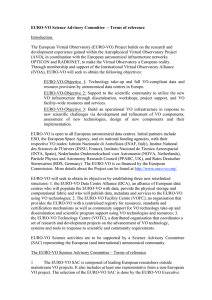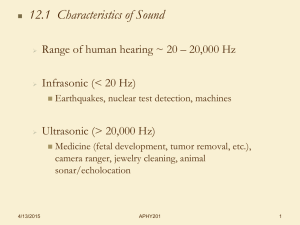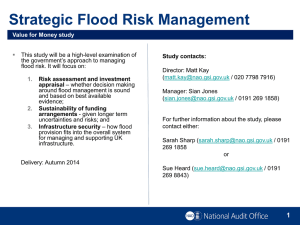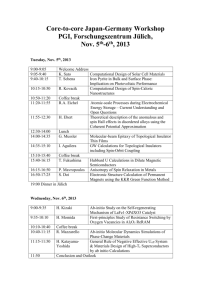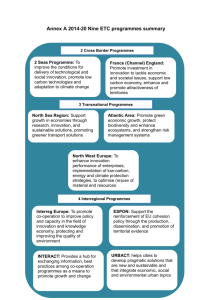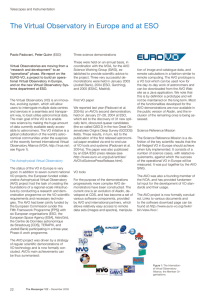dirac-phase-1
advertisement
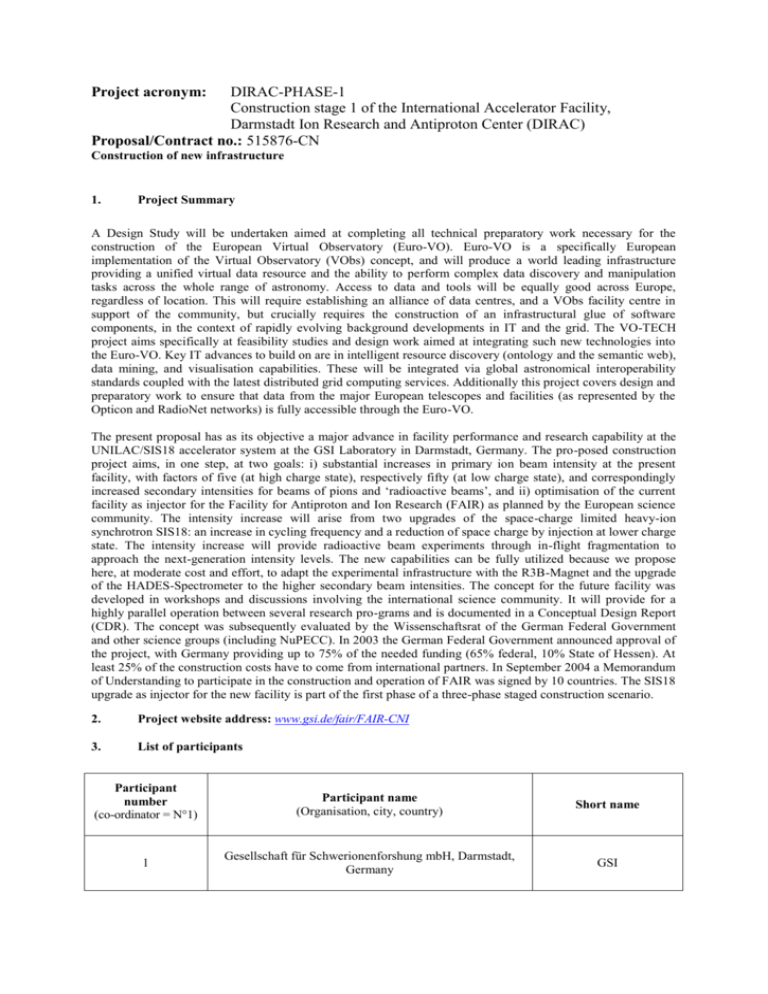
Project acronym: DIRAC-PHASE-1 Construction stage 1 of the International Accelerator Facility, Darmstadt Ion Research and Antiproton Center (DIRAC) Proposal/Contract no.: 515876-CN Construction of new infrastructure 1. Project Summary A Design Study will be undertaken aimed at completing all technical preparatory work necessary for the construction of the European Virtual Observatory (Euro-VO). Euro-VO is a specifically European implementation of the Virtual Observatory (VObs) concept, and will produce a world leading infrastructure providing a unified virtual data resource and the ability to perform complex data discovery and manipulation tasks across the whole range of astronomy. Access to data and tools will be equally good across Europe, regardless of location. This will require establishing an alliance of data centres, and a VObs facility centre in support of the community, but crucially requires the construction of an infrastructural glue of software components, in the context of rapidly evolving background developments in IT and the grid. The VO-TECH project aims specifically at feasibility studies and design work aimed at integrating such new technologies into the Euro-VO. Key IT advances to build on are in intelligent resource discovery (ontology and the semantic web), data mining, and visualisation capabilities. These will be integrated via global astronomical interoperability standards coupled with the latest distributed grid computing services. Additionally this project covers design and preparatory work to ensure that data from the major European telescopes and facilities (as represented by the Opticon and RadioNet networks) is fully accessible through the Euro-VO. The present proposal has as its objective a major advance in facility performance and research capability at the UNILAC/SIS18 accelerator system at the GSI Laboratory in Darmstadt, Germany. The pro-posed construction project aims, in one step, at two goals: i) substantial increases in primary ion beam intensity at the present facility, with factors of five (at high charge state), respectively fifty (at low charge state), and correspondingly increased secondary intensities for beams of pions and ‘radioactive beams’, and ii) optimisation of the current facility as injector for the Facility for Antiproton and Ion Research (FAIR) as planned by the European science community. The intensity increase will arise from two upgrades of the space-charge limited heavy-ion synchrotron SIS18: an increase in cycling frequency and a reduction of space charge by injection at lower charge state. The intensity increase will provide radioactive beam experiments through in-flight fragmentation to approach the next-generation intensity levels. The new capabilities can be fully utilized because we propose here, at moderate cost and effort, to adapt the experimental infrastructure with the R3B-Magnet and the upgrade of the HADES-Spectrometer to the higher secondary beam intensities. The concept for the future facility was developed in workshops and discussions involving the international science community. It will provide for a highly parallel operation between several research pro-grams and is documented in a Conceptual Design Report (CDR). The concept was subsequently evaluated by the Wissenschaftsrat of the German Federal Government and other science groups (including NuPECC). In 2003 the German Federal Government announced approval of the project, with Germany providing up to 75% of the needed funding (65% federal, 10% State of Hessen). At least 25% of the construction costs have to come from international partners. In September 2004 a Memorandum of Understanding to participate in the construction and operation of FAIR was signed by 10 countries. The SIS18 upgrade as injector for the new facility is part of the first phase of a three-phase staged construction scenario. 2. Project website address: www.gsi.de/fair/FAIR-CNI 3. List of participants Participant number (co-ordinator = N°1) Participant name (Organisation, city, country) Short name 1 Gesellschaft für Schwerionenforshung mbH, Darmstadt, Germany GSI 2 Forschungszentrum Jülich, Jülich, Germany FZI 3 The Svedberg Laboratory, Uppsala, Sweden UU 4 The Central Laboratory of the Research Councils, Daresbury, England CCLRC 5 void void 6 Budker Institute of Nuclear Physics, Novosibirsk, Russia BINP 7 Institute of High Current Electronics, Tomsk, Russia IHCE SB RAS 8 Institute für Kernphysik, Universität Frankfurt, Frankfurt, Germany U-Frankfurt 9 M. Smoluchowski Institute of Physics Jagiellonian University, Krakow, Poland JU 10 Departamento de Física de Partículas University of Santiago de Compostela, Santiago de Compostela, Spain USC 11 Laboratório de Instrumentação e Física Experimental de Partículas, Coimbra, Portugal LIP-Coimbra 12 Nuclear Physics Institute, Academy of Science of Czech Republic NPI 13 Institute for Nuclear Research, Russian Academy of Science, Moscow, Russia INR 14 Commissariat a l'Energie Atomique, Gif sur Yvette, France CEA


